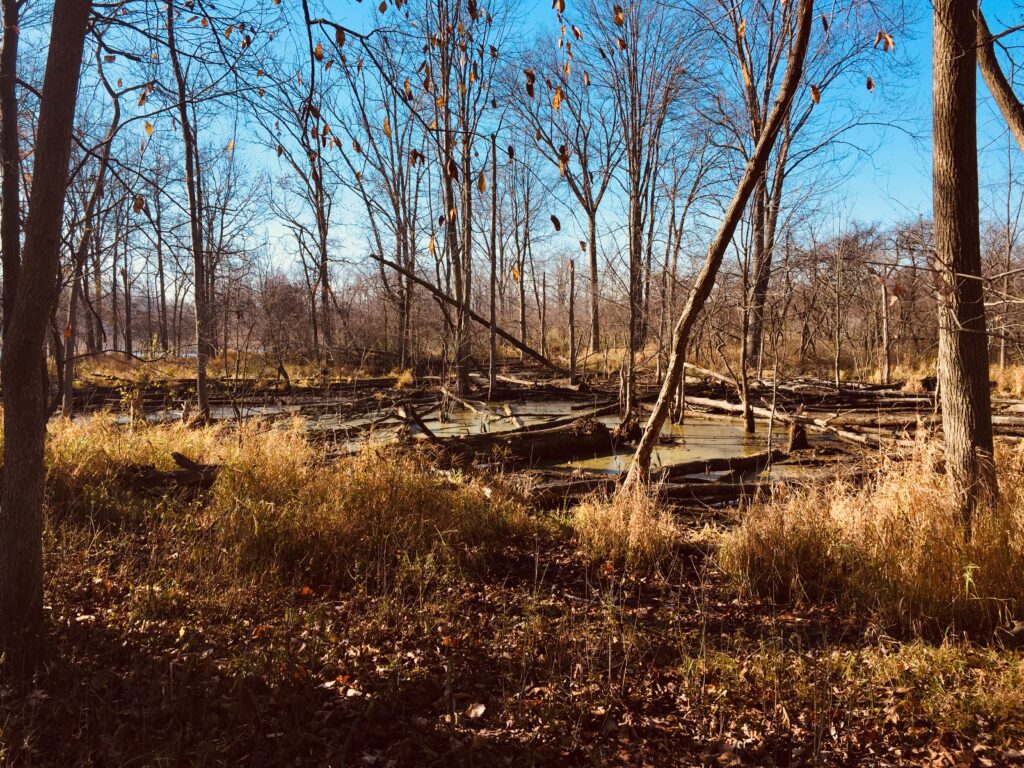During the past four years, politicization of the word “swamp” gave that natural environment a bad name. It’s bad enough that the first thing many of us think about when the word “swamp” comes up is hungry alligators. In this case, the swamp is a murky place of procedural and rhetorical bog that presumably honorable politicians need to drain. The change in American political leadership revived the haunting chant, “drain the swamp,” hopefully for the last time.
On a glorious November morning following the end of the presidential campaign I thought about swamps and bogs and marshes and wetlands and that contrary to some politicians they represent clean, filtered water and rich vegetation. There are distinctions between them, but generally speaking they’re essential components of the natural ecology. As for political ecology, we’ll leave that for political scientists to debate.
I first became conscious of wetlands as being other than mushy spaces with frogs and snakes while reporting about the reconstruction of a portion of the Detroit River. It was explained to me that much of the St. Clair and Detroit riverbanks were once wetlands, filled and reconstructed to serve industrial purposes. Yes, it was drained. No one thought about the impact on wildlife, much less more complex ecological issues at a time when sturgeon were in abundance and the industrial might of the United States was fueling prosperity. Then rivers that helped cool industrial mechanisms and transported products and raw materials became noticeably polluted.
In 1948, the Federal Water Pollution Act became the first U.S. law to address water pollution, making it unlawful for anyone to discharge pollutants into navigable waters — unless a permit was obtained under its provisions. For years, of course, industry has sought permits for doing what it does to air, water, and soil, presumably with scientific validation and proper review from federal, state, and local authorities. The late John Dingell, Jr., the longest-serving member of Congress from the downriver area of Detroit, sponsored some of the nation’s landmark environmental laws. His inspiration came from his father, Rep. John Dingell, Sr. The two were duck hunters in the wetlands of the Lake Erie basin. As the younger Dingell once recalled, “This is the thing that my dad and I used to talk about — how are we going to save the marshland around Lake Erie and down at the southern end of the Detroit River?”
John Dingell, Jr., went on to define a pragmatic consciousness that was shared by many and grew over time to produce a collaboration between environmentalists and proponents of environmentally responsible industrialization to restore the Rivers and wetlands that feed the Lake Erie basin. One of the most notable accomplishments of Dingell’s efforts was the creation of the Detroit International Wildlife Refuge, the only such refuge in the United States. This 7.88 square mile area includes Humbug Marsh, an area that nearly became an upscale housing development.
Visitors now walk through Humbug Marsh, the last remaining undeveloped riverfront property along the Detroit River, learning about the wildlife that lives there. With duck hunting season upon us, and the announcement by Ducks Unlimited Canada earlier this month regarding its purchase of St. Luke’s Marsh (https://www.globenewswire.com/news-release/2020/11/04/2120249/0/en/Ducks-Unlimited-Canada-Celebrates-Purchase-of-St-Luke-s-Marsh-on-Lake-St-Clair.html), one of the few remaining coastal wetlands on Lake St. Clair in southwestern Ontario, it’s a good time to reflect on marshes, why swamps shouldn’t be drained and how enlightened public servants together with environmental advocates, can find common purpose to restore wetlands.
A thin wet sky, that yellows at the rim,
And meets with sun-lost lip the marsh’s brim.
The pools low lying, dank with moss and mould,
Glint through their mildews like large cups of gold
Among the wild rice in the still lagoon,
In monotone the lizard shrills his tune.
The wild goose, homing, seeks a sheltering,
Where rushes grow, and oozing lichens cling.
Late cranes with heavy wing, and lazy flight,
Sail up the silence with the nearing night.
And like a spirit, swathed in some soft veil,
Steals twilight and its shadows o’er the swale.
Hushed lie the sedges, and the vapours creep,
Thick, grey and humid, while the marshes sleep.
– “Marshlands,” By Emily Pauline Johnson
Photo above: a vernal pool at Humbug Marsh

A round of applause for your blog. Much thanks again. Really Cool. Chery Hartwell Blackington
Thanks, Chery.
Very good blog! Do you have any hints for aspiring writers? I am hoping to start my own site soon but I am a little lost on everything. Addia Zach Lon
Addia,
Thanks for your comment. It’s understandable about being lost. I actually began explaining that I was lost, in a good way. I knew I wanted to explore the physical and psychological region of the third coast, but I didn’t know where this would take me. I’m looking forward to examining my posts a year from now to see where I am.
My only advice is determine the topic you really want to write about, then explore those who are writing about it and what’s missing, or what you want to add. Then itemize some blog topics. If you are having trouble coming up with areas of interest, then maybe you should hold off because you won’t go very far. But you may find that there are a lot of ways you can approach your subject in creating a unique perspective. At least that’s what I’m trying to do.
Remember, it’s good to be lost — hopefully not for long…
Dennis
Only wanna admit that this is extremely helpful, Thanks for taking your time to write this. Alex Dion Eustazio
Thanks, Alex.
There is definately a great deal to know about this topic. I really like all of the points you made. Kinna Moe Herve
Thanks, Kinna.